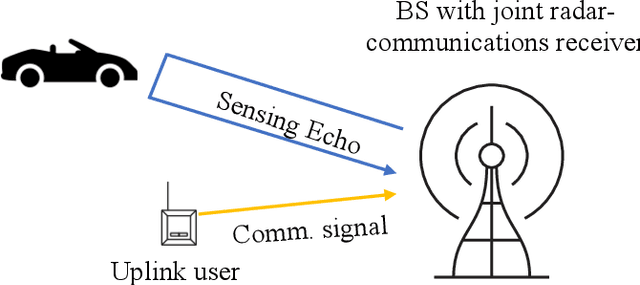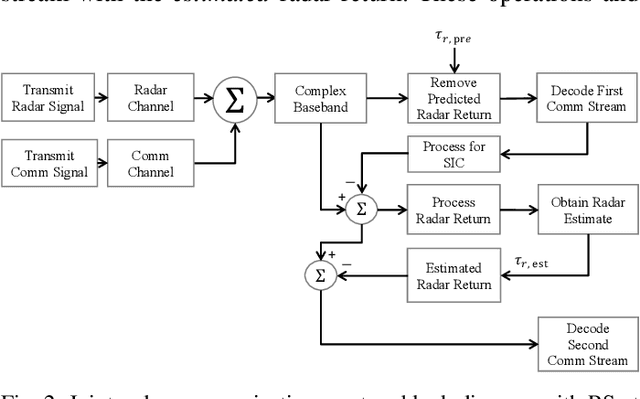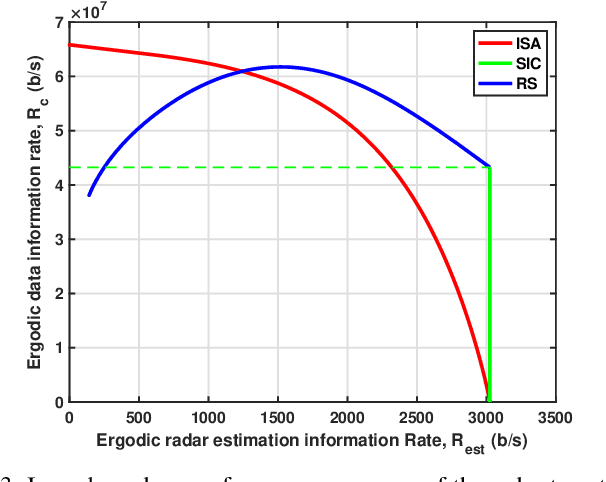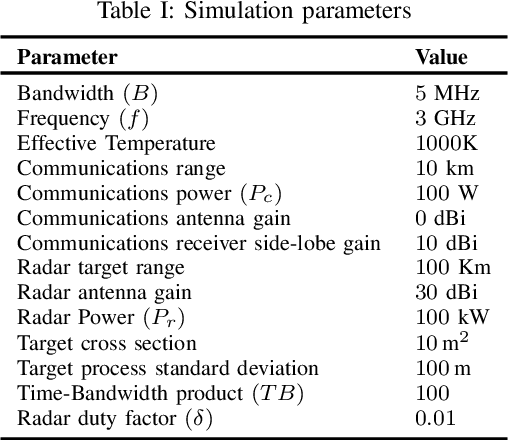Coexistence of Radar and Communication with Rate-Splitting Wireless Access
Paper and Code
Nov 20, 2024



This work investigates the coexistence of sensing and communication functionalities in a base station (BS) serving a communication user in the uplink and simultaneously detecting a radar target with the same frequency resources. To address inter-functionality interference, we employ rate-splitting (RS) at the communication user and successive interference cancellation (SIC) at the joint radar-communication receiver at the BS. This approach is motivated by RS's proven effectiveness in mitigating inter-user interference among communication users. Building on the proposed system model based on RS, we derive inner bounds on performance in terms of ergodic data information rate for communication and ergodic radar estimation information rate for sensing. Additionally, we present a closed-form solution for the optimal power split in RS that maximizes the communication user's performance. The bounds achieved with RS are compared to conventional methods, including spectral isolation and full spectral sharing with SIC. We demonstrate that RS offers a superior performance trade-off between sensing and communication functionalities compared to traditional approaches. Pertinently, while the original concept of RS deals only with digital signals, this work brings forward RS as a general method for including non-orthogonal access for sensing signals. As a consequence, the work done in this paper provides a systematic and parametrized way to effectuate non-orthogonal sensing and communication waveforms.
 Add to Chrome
Add to Chrome Add to Firefox
Add to Firefox Add to Edge
Add to Edge